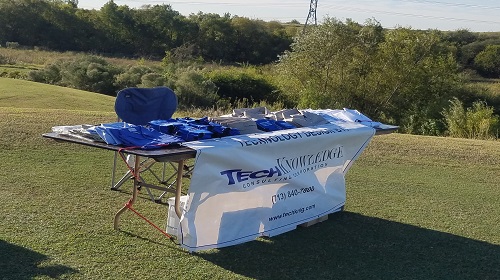Technology Disaster Preparedness and Recovery Planning after Hurricane Harvey
2017 has been quite a year and it’s given us plenty of opportunities to evaluate our technology disaster preparedness and recovery plans. For many, these plans have recently been put to the ultimate test.
Houston and surrounding communities were hit hard by Hurricane Harvey. Homes and businesses destroyed by record breaking floods. Several months later, the recovery efforts are still in full force.
With one of the worst natural disasters in US history landing in our own backyard, we have no choice but to assess our current technology plans and sift through painful lessons learned. Disaster recovery planning isn’t just for large corporations. Some of the hardest hit by this storm were small businesses. CNBC estimated that nearly 40% of small business affected by Hurricane Harvey would have no choice but to close their doors for good.
With one of the worst natural disasters in US history landing in our own backyard, we have no choice but to assess our current technology plans and sift through painful lessons learned. Disaster recovery planning isn’t just for large corporations. Some of the hardest hit by this storm were small businesses. CNBC estimated that nearly 40% of small business affected by Hurricane Harvey would have no choice but to close their doors for good.
With one of the worst natural disasters in US history landing in our own backyard, we have no choice but to assess our current technology plans and sift through painful lessons learned. Disaster recovery planning isn’t just for large corporations. Some of the hardest hit by this storm were small businesses. CNBC estimated that nearly 40% of small business affected by Hurricane Harvey would have no choice but to close their doors for good.
Richard Langseth, Vice President of TechKnowledge, strongly recommends reviewing your disaster plan at least once per year. If you haven’t had the opportunity to do this since the storm, you really need to make time. You need to practice so that when a disaster does strike, everyone knows their place and their role.
Once your plan is fully documented, you need to test it. One of the biggest mistakes companies make, is executing for the first time in the middle of a crisis. Just like emergency drills you did in grade school, your disaster recovery plan should be rehearsed and feel like second nature.
If there’s any doubt in your mind, it might be time to take a fresh look.
Some key considerations should include:- Do my onsite assets have sufficient electrical backup power?
- Do I have redundancy in my network connections (critically important if major assets are off site)?
- Are those critical assets protected against water, weather, and fire?
- How will we get an early alert if a problem arises?
- What is backed up off site? How recently? How hard is it to restore that data?
- Are key tasks and responsibilities well documented/well understood?
- Are details as simple as cell phone numbers up to date? Key vendor contacts?
- Who, how, when will there be communication with employees? Customers? Providers?
If you need help making this plan or evaluating your current infrastructure, give us a call today. With offices covering the State of Texas, one of our highly skilled consultants can help protect the future of your company.











